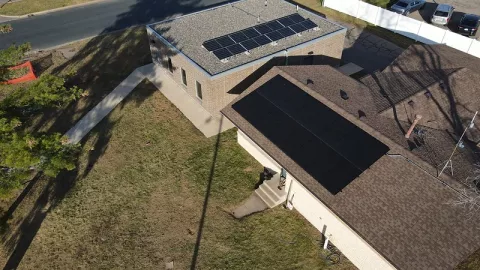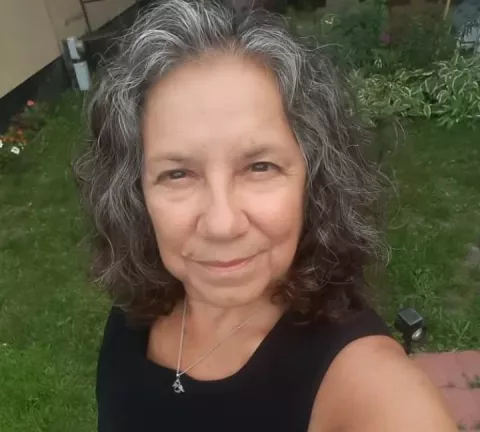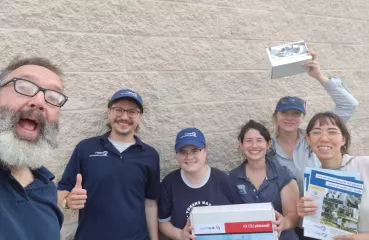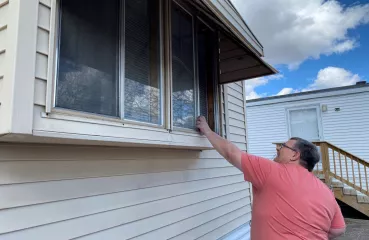It can be a tricky task trying to solarize a manufactured (trailer) home park. The roofs of the homes are typically not able to support solar panels. Plus the land that the homes sit on is typically not owned by the homeowner. So how do residents access solar and save money on energy? Park Plaza Cooperative, a resident-owned manufactured home community in Fridley, Minnesota has been working to answer those questions.

To tackle the challenge, they first organized with Cooperative Energy Futures (CEF). CEF works with underserved communities and the general public to reduce energy use and help create other sources of clean, renewable energy. This partnership enabled Park Plaza Cooperative residents to reduce their energy bills subscribing to an off-site community solar garden.
Second, Park Plaza Cooperative sought creative solutions to house solar panels on site. After some investigation, they learned that the park has two buildings that are structurally fit to hold roof mounted panels: a single family rental home and the park’s emergency shelter. With help from Solar By Us, Park Plaza Cooperative was able to install community solar on both of those buildings in 2024. Let there be light!
To learn more about these efforts and successes, we chatted with Park Plaza Cooperative’s President, Natividad Seefield, and Eric Jensen of Solar By Us.

 solar for years. We eventually were able to connect with CEF and as a result, residents could sign up to add solar to their homes by becoming members of the solar garden. We had lots of help not only from CEF but also with our technical assistance providers
solar for years. We eventually were able to connect with CEF and as a result, residents could sign up to add solar to their homes by becoming members of the solar garden. We had lots of help not only from CEF but also with our technical assistance providers  community improve their financial and environmental sustainability means many people now have a stronger foundation to continue building from. Solar has proven itself as a fundamental energy resource today and in the future, so now the challenge to take on is making it more accessible, overcoming barriers, and driving the savings higher for those where it has the greatest impact.
community improve their financial and environmental sustainability means many people now have a stronger foundation to continue building from. Solar has proven itself as a fundamental energy resource today and in the future, so now the challenge to take on is making it more accessible, overcoming barriers, and driving the savings higher for those where it has the greatest impact.

